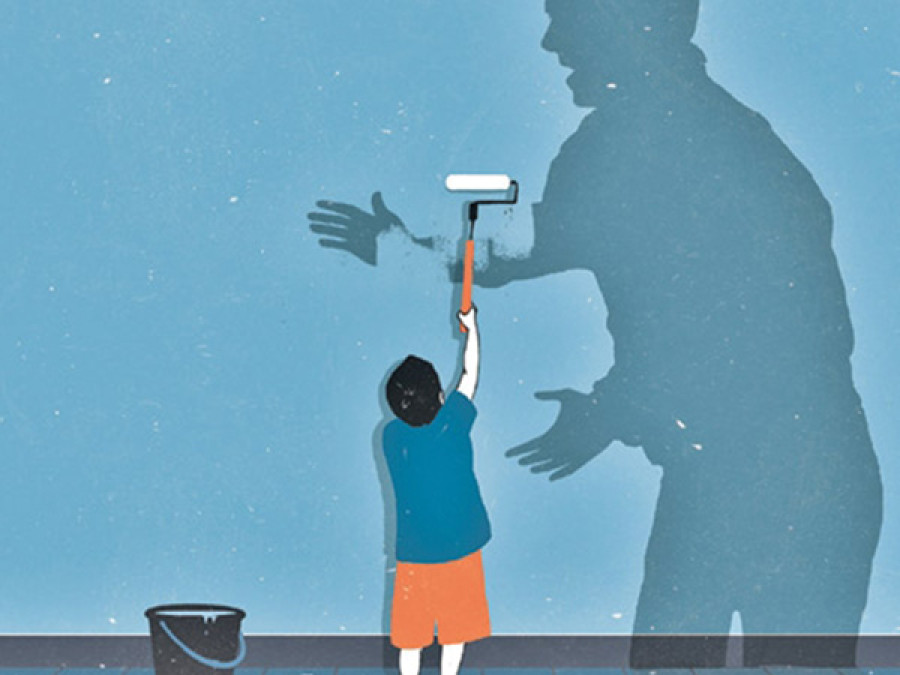Opinion
Go easy, teachers
Using corporal punishment to maintain order in the classroom is an obsolete concept
Durga Gautam
In an era where motivation and positive counselling rules the academic field, there are still some educational institutions that see the need for corporal punishment. Moreover, there are some teachers who view it as an effective and reliable way to run their classes and exercise control over their students. However, corporal punishment, which has become obsolete in a majority of educational institutions, can never be a tool to ensure effective learning.
Wrong choice
Corporal punishment, or physical punishment, is undesirable and harmful for various reasons. First, it inflicts physical pain on the victim. Sometimes the intensity of the punishment is so severe that there are visible physical injuries and the pain caused is beyond tolerance. We often read news reports about teachers thrashing their students black and blue which requires them to be hospitalised. This is entirely against the spirit of child rights.
Second, the pain thus inflicted is more psychological than physical. Students who have been physically punished often feel low and insecure. They are terrorised by the very presence of the teacher, and always try to find ways to avoid him or her. Being overly cautious not to provoke the teacher, the student cannot stay focused on the subject. As a result, he or she develops frustration and maybe depression too.
Sometimes, the result is just the opposite. Students who have been punished turn even more violent. Instead of being more sincere and obedient as expected by the teacher, they begin to be more troublesome and irritating. They begin to look for ways to avenge the insult, and start provoking the teacher in one way or the other. This aggravates the situation as the teacher is likely to become more aggressive. The vicious cycle continues and ultimately makes life hard for both the teacher and the student.
Changing times
There were times when physical punishment was thought to be correct and an integral part of teaching. Teachers who thrashed and terrorised their students were viewed as being successful and effective. Students feared and obeyed them without question. Even parents had no objection to it. They had special respect for teachers and thought they could never be wrong. Students did not complain about physical punishment primarily because they were used to this kind of behaviour from seniors everywhere. They received physical punishment even at home as they were brought up strictly. Most parents thrashed their children even for simple errors.
But today we live in an era where children have a completely different upbringing. They are brought up in a fairly liberal environment and are not exposed to any kind of violence. They are not used to scolding or any kind of verbal abuse, much less physical punishment. If these children are physically punished at school or college, they will not tolerate it and react very violently. As a result, the punishment turns out to be counterproductive. Parents too are more aware and watchful about how their children are treated at school these days.
A majority of schools and educational institutions have come out of this vicious cycle of corporal punishment. They have redefined the punishment system and redrawn the boundaries of punishment. Many schools have replaced their DIs (discipline incharges) with counsellors and psychologists. There are separate counselling desks in these schools and colleges where students are provided positive counselling. Even teachers are provided basic counselling to help them handle difficult students. Some schools hire professional trainers and experts to train their teachers in subjects like anger management and effective handling of challenging students. Students are not thrashed or physically tortured by teachers or administrative personnel. Even students exhibiting serious aberrations and misbehaviour are positively counselled.
Beyond stereotypes
However, we still find some educational institutions that believe in physical punishment. They view it as an important tool to maintain discipline. They give open instructions to their teachers to thrash students if they do not obey or misbehave with them. The teachers too follow these instructions without any hesitation. Physical punishment is indeed a weapon of the weak. Wise and professionally confident teachers never punish their students physically, no matter how difficult they are. They try to find milder and more effective ways to deal with them. They use their academic and intellectual dominance to tame even the most difficult student.
Teachers who lack professional confidence resort to physical punishment as a way to exercise dominance over their students. They use physical punishment as a tool to suppress the voices that may be targeted at their incompetence. Most of such teachers try to avoid interactions in class for fear that students may catch them if they make a mistake. Their classes are often one-way lectures where students are supposed to be passive listeners. Thus, in the changed context of these modern times, physical punishment to promote effective learning and behaviour is an outdated concept. Instead, it is time to think beyond such stereotypes and review the whole punishment system.
Gautam is associated with Orchid International College, Kathmandu




 15.12°C Kathmandu
15.12°C Kathmandu










